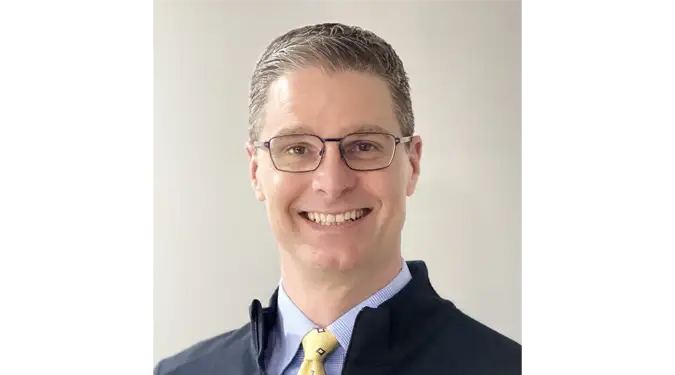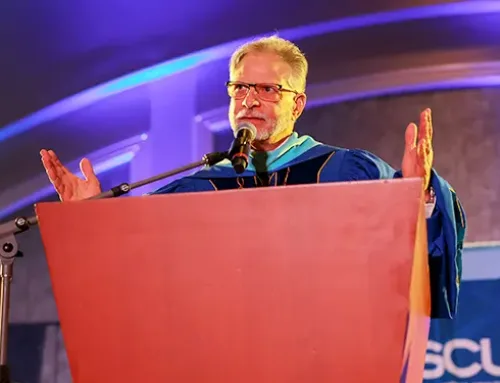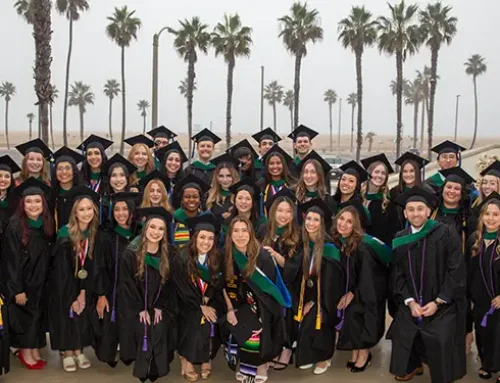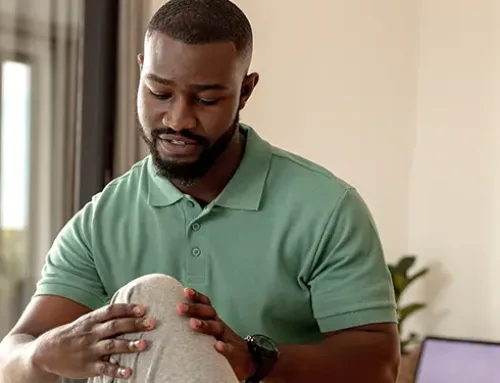The New Face of SCU’s Chiropractic Education: A Q&A with Dr. Nic Poirier
When Dr. Nic Poirier talks about chiropractic care, it’s more than just clinical; it’s personal. Years ago, as a young athlete struggling to breathe due to an injury, a chiropractic adjustment not only helped him take a deep breath again but also gave him clarity on his life’s path. “Right then and there, I knew this was the profession that I wanted to pursue,” he says. That moment sparked a journey through chiropractic education, post-graduate residency in radiology, executive leadership education, and years of academic administration. Eventually, this led to his recent appointment as Executive Dean of the College of Chiropractic Education at Southern California University of Health Sciences (SCU).
Now at the helm of one of the most forward-thinking chiropractic programs in the country, Dr. Poirier is focused on enhancing the student experience and preparing future chiropractors to lead in an evolving healthcare system. In this exclusive Q&A, he reflects on his connection to chiropractic care, what makes SCU’s approach truly unique, and why the next generation of chiropractors is stepping into the most exciting moment in the profession’s history.
Q&A with Dr. Nic Poirier
Q: What was your very first memory of chiropractic? Was there a moment that made you say, “This is what I want to do”?
A: My first memory of chiropractic is being treated as a patient before a sporting event when I couldn’t breathe without pain. I had a rib that wasn’t moving well, and a chiropractor was able to instantly resolve that pain by adjusting it. That moment left a huge impression on me, especially because I went on to win the race. From that day forward, I knew what I wanted to do with my career.
Q: Now that you’ve stepped into the Executive Dean role, what’s your first big goal?
A: My first major goal is to improve the educational experience for our students. I want to ensure that our students are receiving the highest quality education in the profession. That means preparing them well for the basics: to be competent, caring, and ethical healthcare professionals, and providing opportunities to explore advanced training opportunities that align with their career goals.
Preparing students to pass boards is only a small piece of the puzzle. The larger component is to provide an inspiring environment where students become thirsty for knowledge, engaged in their learning, become critical thinkers, are supported through life’s challenges, and understand what is needed to be successful in clinical practice. While chiropractic school requires hard work and dedication, I believe it can be a meaningful and positive experience. A well-rounded, purposeful, and personalized education helps students not just succeed but thrive.
Q: What do you think sets SCU’s chiropractic program apart from others out there?
A: SCU’s Integrative and Whole Health approach is unique. It’s exciting to educate students to care for the whole person and to do so collaboratively with other providers. Our students learn to ask patients not just “What’s the matter with you?” but “What matters to you?” That shift in perspective sets us apart. We also place strong emphasis on sports medicine and other areas of student interest (e.g., additional techniques, treatment of special populations, functional medicine, etc.). Our clinical training emphasizes a value-based spine care model that provides students with exposure to specialized care settings and a variety of real-world clinical environments.
Q: You’ve pursued both a post-graduate radiology and executive leadership education. How do you think that blend shapes your leadership style?
A: There’s a lot of connections and similarities between both fields. My clinical radiology experience helped me become comfortable with uncertainty, to make decisions based on the best available evidence, and to determine when additional investigation is needed for problem solving; each representing an important skillset of academic leadership. I still use the framework of radiology reports when I write proposals or accreditation reports. My executive leadership training taught me, among many things, how to optimize the work of teams, to ask and find answers to the relevant questions, and to operationalize a plan for success.
In academic and administrative roles, I’ve learned to listen to the challenges students and faculty face. I believe good administrators understand those pain points and help clear the path to success. My goal is to build a culture and to implement systems that support everyone, including students and faculty, so that they can do amazing work without unnecessary barriers.
Q: What do you think the next generation of chiropractors needs to know that previous ones didn’t?
A: Today’s chiropractors are in a much better position than in the past. Chiropractic care is far more integrated into the broader healthcare system than it was several years ago. We’re seeing chiropractors in hospitals, in the VA, on leadership boards, and involved in policymaking at national and international levels.
Clinical guidelines are supporting spinal manipulative therapy in a way that didn’t exist 20 or 30 years ago. The profession has earned increased recognition as a valuable, evidence-based member of the healthcare team, especially for conservative care of musculoskeletal and spinal-related conditions.
Q: What’s something your students or colleagues would be surprised to learn about you?
A: I love shoveling snow. I live in one of the snowiest parts of the U.S., and when it snows a couple of inches overnight, I’m out at 5 a.m. with a shovel, enjoying every minute of it.
I also enjoy hiking, biking, skiing, and spending time outdoors. There’s something almost spiritual about being in nature—the views, the sounds, the smells. It all helps me recharge. I think it’s important to stay connected to the natural world.
As Dr. Poirier steps into his role as Executive Dean, his vision is clear: to create an environment where students are challenged, supported, and inspired to become not only skilled chiropractors but also compassionate, Whole-Health practitioners. With a commitment to academic excellence, integrative care, and innovation, SCU’s Doctor of Chiropractic program is preparing the next generation to lead with purpose and make a lasting impact on the future of healthcare.
Interested in becoming a chiropractor?
Learn more about the Doctor of Chiropractic program at Southern California University of Health Sciences and start your journey toward a career in integrative, Whole Health care. Visit the Doctor of Chiropractic webpage to explore program details, admissions requirements, and more.
Related Posts





